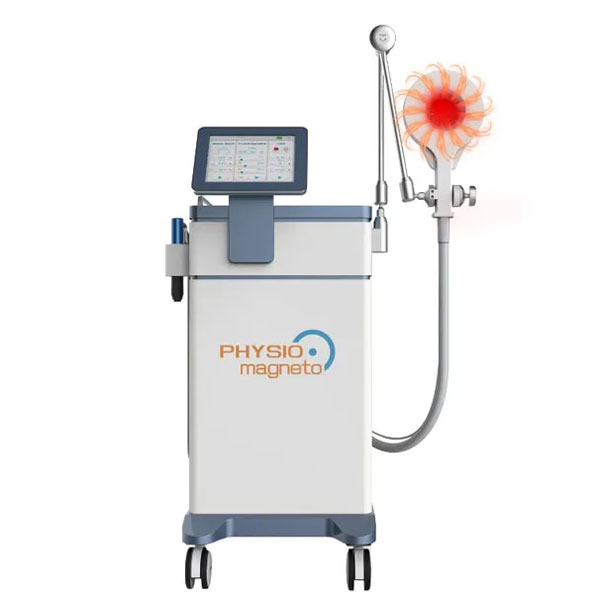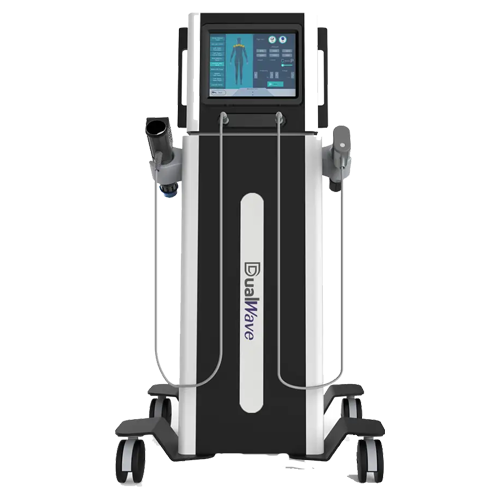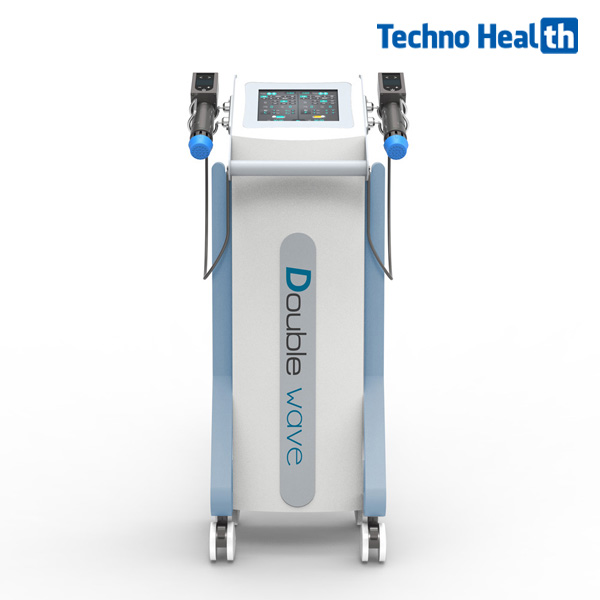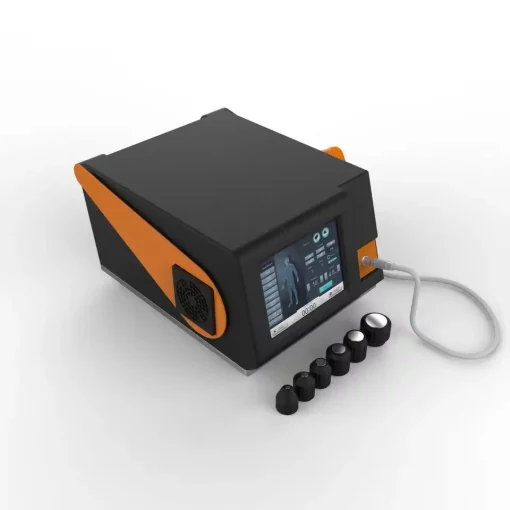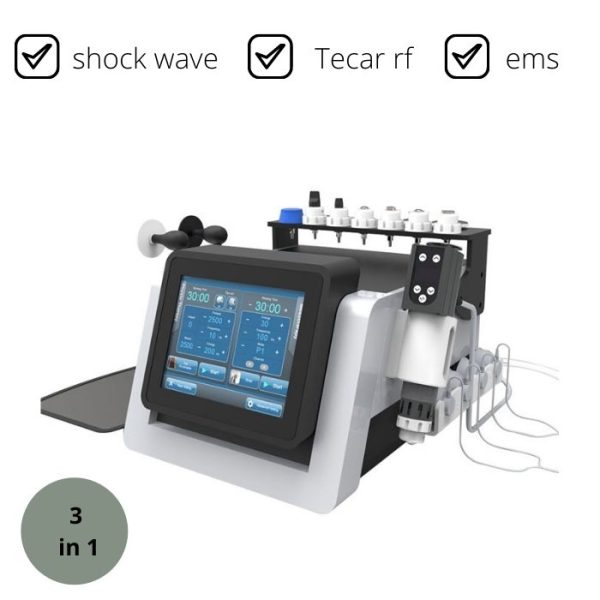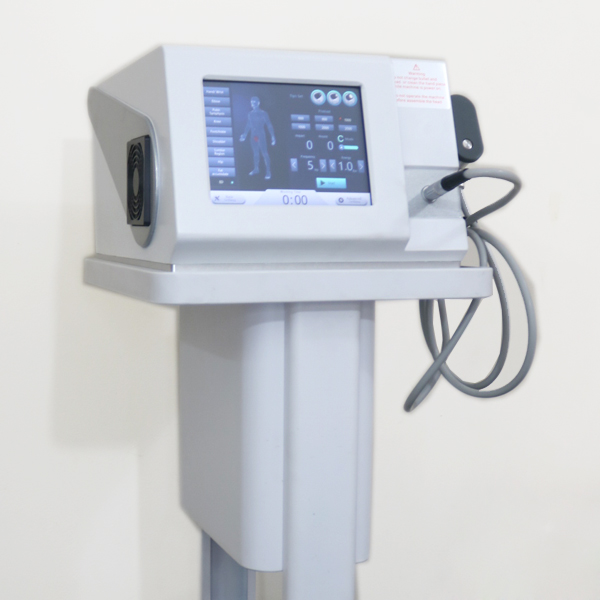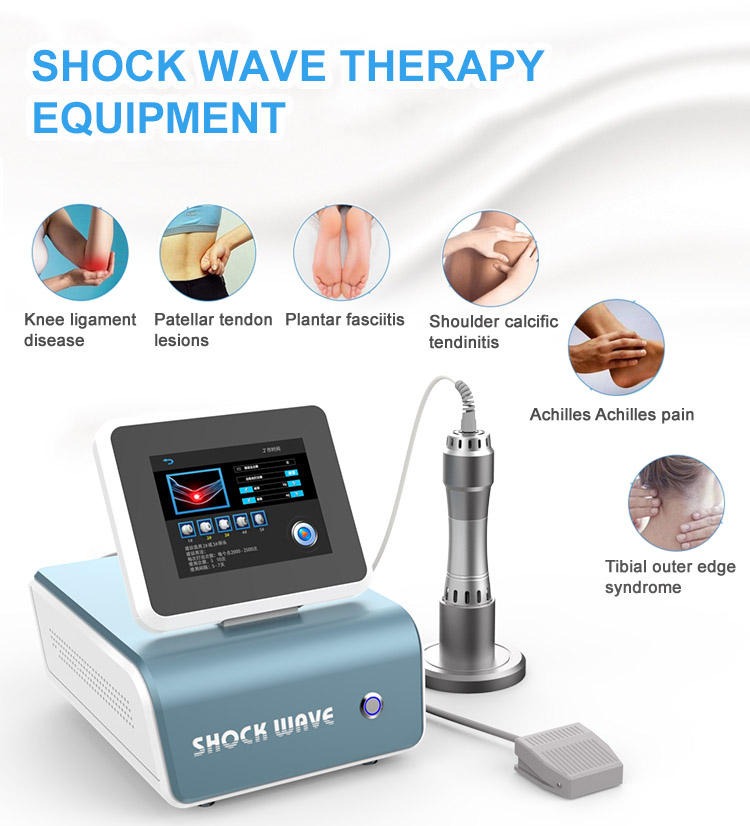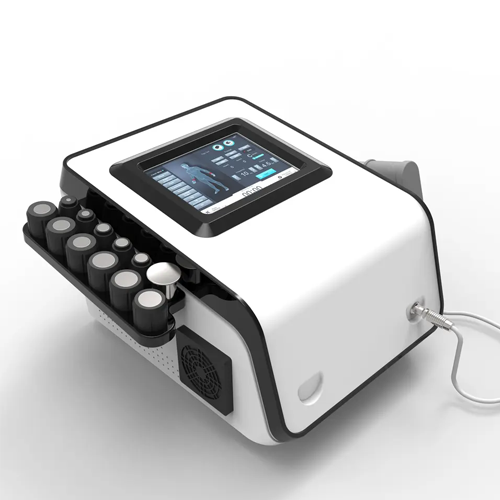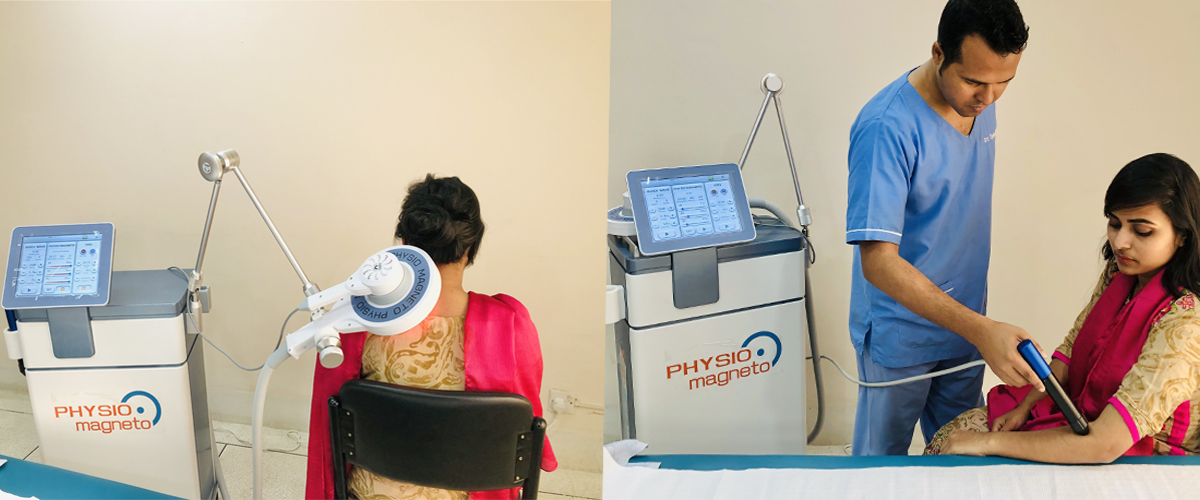
What is extracorporeal shock wave therapy machine and what are the benefits?
Extracorporeal Shock wave therapy machine is a non-invasive treatment that uses sound waves to treat chronic pain, inflammation, and other conditions. It is a safe and effective way to reduce pain, improve mobility, and increase overall quality of life. Shock wave therapy has been used for decades in the medical field and is now gaining popularity as an alternative treatment for a variety of ailments.
It is an effective alternative to traditional treatments such as medication or surgery, providing long-lasting relief with minimal side effects. Shock wave therapy can be used to treat a wide range of conditions, including tendinopathies and musculoskeletal injuries. This cutting-edge treatment offers patients fast-acting relief and improved mobility without the risks associated with more invasive treatments.
Different Types of Shock Wave Therapy Machine & Price
What is shockwave therapy?
Shockwave therapy is a non-invasive medical treatment that uses high-energy sound waves to treat various conditions, such as musculoskeletal injuries, chronic pain, and some types of cardiovascular diseases. It works by delivering acoustic energy to the target area, which stimulates healing and promotes tissue regeneration.
Shockwave therapy
Shockwave therapy is a non-invasive medical treatment that uses high-energy sound waves to stimulate the healing of bones, muscles, and other soft tissue injuries. The therapy is typically used to treat chronic conditions such as plantar fasciitis, tennis elbow, and Achilles’ tendinitis, as well as other conditions that have not responded to more traditional forms of treatment.
The therapy works by delivering high-energy sound waves, or shockwaves, to the affected area. These shockwaves create micro trauma to the tissue, which triggers the body’s natural healing response. This process increases blood flow to the area, which in turn promotes the growth of new blood vessels and the formation of new collagen.
Shockwave therapy is typically administered in a series of treatments, with each session lasting between 5 and 20 minutes. The number of treatments needed will vary depending on the condition being treated and the severity of the injury. In most cases, patients will begin to notice an improvement in their symptoms within a few weeks of starting the therapy.
One of the major advantages of shockwave therapy is that it is non-invasive, meaning that it does not require any incisions or injections. This makes it a good option for patients who are unable or unwilling to undergo more invasive forms of treatment. Additionally, because the therapy is administered on an outpatient basis, patients can typically return to their normal activities immediately after each session.
Shockwave therapy is considered a safe and effective treatment option for a variety of conditions, but it is not without risks. Some common side effects of the therapy include pain, swelling, and redness at the site of the treatment. These side effects are usually mild and temporary, but in rare cases, they may be more severe or long-lasting.
Shockwave Therapy vs. Radial Wave Therapy
Shockwave therapy and radial wave therapy are both forms of non-invasive treatment that use high-energy sound waves to treat various musculoskeletal conditions such as plantar fasciitis, tennis elbow, and Achilles’ tendinitis. The main difference between the two is the type of sound wave that is used.
Shockwave therapy uses high-energy, focused sound waves that penetrate deep into the tissue to stimulate healing. This type of therapy is typically used to treat deep-seated injuries or chronic conditions.
Radial wave therapy, on the other hand, uses lower-energy, radial sound waves that work on a more superficial level. This type of therapy is typically used to treat more acute injuries or conditions that are closer to the surface of the skin.
Both shockwave and radial wave therapy is considered safe and effective, but the specific type of therapy used will depend on the condition being treated and the preferences of the healthcare provider.
Extracorporeal shockwave therapy
Extracorporeal shockwave therapy (ESWT) is a non-invasive treatment method that uses high-energy sound waves to treat a variety of musculoskeletal conditions, including but not limited to:
Plantar fasciitis
Tennis elbow
Calcific tendinitis of the shoulder
Non-union fractures
Myofascial pain
During the procedure, a handheld device is used to deliver the shockwaves to the affected area through the skin. The shockwaves cause micro trauma to the tissue, which in turn triggers a healing response. This process can help to reduce pain, improve mobility, and increase blood flow to the area.
ESWT (Extra Corporal Shock Wave Therapy) is a relatively safe procedure with minimal side effects. The procedure is usually performed on an outpatient basis and does not require anesthesia. The patient may experience some discomfort during the procedure, but this is usually mild and short-lived.
It’s important to note that ESWT is not suitable for everyone, and it should not be used in certain situations, such as in patients with bleeding disorders, in the presence of metal implants, or in overactive malignancy.
It’s important to discuss the risks and benefits of ESWT with a healthcare professional before starting the treatment and to get a clear understanding of the expected outcomes and the possible side effects.
Benefits of Shockwave Therapy
Shockwave therapy is a non-invasive treatment that uses high-energy sound waves to stimulate healing in musculoskeletal conditions. Some of the benefits of shockwave therapy include:
Pain relief: Shockwave therapy can be effective in reducing pain associated with conditions such as plantar fasciitis, tennis elbow, and Achilles tendinitis.
Improved function: By reducing pain and promoting healing, shockwave therapy can improve the function of the affected area, allowing patients to return to normal activities more quickly.
Non-invasive: Shockwave therapy is a non-invasive treatment option, so it doesn’t require surgery or injections.
Minimal side effects: Shockwave therapy is generally well-tolerated and has minimal side effects.
High success rate: Shockwave therapy has a high success rate for treating a variety of musculoskeletal conditions.
Can also be used for ED (Erectile Dysfunction)
It’s important to note that not all conditions are suitable for shockwave therapy, it’s best to consult a healthcare professional for an assessment and to see if this type of therapy is appropriate for you.
What happens during shock wave therapy?
During shockwave therapy, a wand-like device is placed on the skin over the area being treated. The device generates high-energy sound waves that penetrate deep into the tissue to stimulate healing.
The treatment is usually given in a series of sessions, depending on the condition being treated and the severity of the injury. Each session typically lasts between 5-10 minutes.
The patient may feel mild discomfort or a tingling sensation during the treatment, but it is generally well-tolerated and not painful.
After the treatment, the patient may be advised to rest the affected area and to avoid strenuous activity for a period of time. Some patients may experience mild discomfort or tenderness in the treated area for a day or two after the treatment.
Shockwave therapy has been shown to be effective in treating a variety of musculoskeletal conditions, including plantar fasciitis, tennis elbow, and Achilles tendinitis, as well as for some urology conditions like ED (erectile dysfunction).
It’s important to note that the results of shockwave therapy may vary from person to person, and it’s not suitable for everyone. It’s best to consult a healthcare professional for an assessment and to see if this type of therapy is appropriate for you.
Differences between ESWT and Therapeutic Ultrasound
ESWT (Extracorporeal Shockwave Therapy) and therapeutic ultrasound are both non-invasive treatments that use sound waves to stimulate healing in musculoskeletal conditions. However, there are some differences between the two:
Type of sound wave: ESWT uses high-energy, focused sound waves that penetrate deep into the tissue, while therapeutic ultrasound uses low-energy, high-frequency sound waves that work on a more superficial level.
Indications: ESWT is typically used to treat deep-seated injuries or chronic conditions such as plantar fasciitis, tennis elbow, and Achilles tendinitis, while therapeutic ultrasound is more commonly used to treat acute injuries or conditions that are closer to the surface of the skin, such as soft tissue injuries and sprains.
Treatment duration: ESWT sessions typically last between 5-10 minutes, while therapeutic ultrasound sessions may last for up to 15 minutes.
Effects on tissue: ESWT can stimulate the formation of new blood vessels and promote healing, while therapeutic ultrasound is thought to increase blood flow, reduce inflammation, and promote tissue healing.
Side effects: ESWT may cause mild discomfort or a tingling sensation during the treatment, while therapeutic ultrasound is generally well-tolerated and has minimal side effects.
Both ESWT and therapeutic ultrasound are considered safe and effective, but the specific type of therapy used will depend on the condition being treated and the preferences of the healthcare provider.
Mechanism of action of shock wave therapy (ESWT)
The mechanism of action of extracorporeal shockwave therapy (ESWT) is not fully understood, but it is thought to work by stimulating the body’s natural healing processes. The high-energy, focused sound waves generated by the shockwave therapy device are thought to cause a number of biological changes in the tissue, including:
Stimulation of blood flow: The sound waves are thought to increase blood flow to the affected area, which can help to bring oxygen and nutrients to the tissue and promote healing.
Stimulation of cell growth: The sound waves are thought to stimulate the growth of new blood vessels and the formation of new tissue, which can help to repair damaged tissue.
Breakdown of scar tissue: The sound waves are thought to break down scar tissue that may be preventing the healing of the injury.
Pain reduction: The sound waves are thought to interrupt the pain signals that are being sent to the brain, reducing the sensation of pain.
Release of growth factors: The sound waves are thought to trigger the release of growth factors that promote tissue healing
It’s important to note that the specific mechanism of action may vary depending on the condition being treated and the severity of the injury.
Different types of shock Waves Therapy Machine
There are several different types of shockwaves that can be used in extracorporeal shockwave therapy (ESWT), including:
Radial shockwaves: These are the most common type of shockwaves used in ESWT. They are generated by a device that uses compressed air to create a focused, high-energy sound wave that can penetrate deep into the tissue.
Focused shockwaves: These are similar to radial shockwaves, but the energy is more focused, allowing for more precise treatment.
Electromagnetic shockwaves: These are generated by an electromagnetic coil, rather than compressed air. They have a similar energy output to radial shockwaves but can penetrate more deeply into the tissue.
Piezoelectric shockwaves: These are generated by a device that uses piezoelectric crystals to create a high-energy sound wave. They have a similar energy output to radial shockwaves but can penetrate more deeply into the tissue.
Each type of shockwave has its own unique characteristics and indications, the choice will depend on the condition being treated, the severity of the injury, and the preferences of the healthcare provider. It’s best to consult a healthcare professional for an assessment and to see which type of shockwave therapy is appropriate for you.
When is shock wave therapy used?
Shockwave therapy (ESWT) is typically used to treat a variety of musculoskeletal conditions, including:
Plantar fasciitis: a common condition that causes heel pain, typically caused by inflammation of the tissue that connects the heel bone to the toes.
Tennis elbow: a condition that causes pain and inflammation in the outer part of the elbow, typically caused by overuse or repetitive motions.
Calcific tendinitis of the shoulder: a condition that causes pain and stiffness in the shoulder, typically caused by calcium deposits in the rotator cuff tendons.
Achilles tendinitis: a condition that causes pain and inflammation in the Achilles tendon, typically caused by overuse or repetitive motions.
Patellar tendinitis: a condition that causes pain and inflammation in the tendon that connects the kneecap to the shinbone, typically caused by overuse or repetitive motions.
Stress fractures: small cracks in the bone caused by overuse or repetitive motions.
Non-union fractures: a condition where a broken bone does not heal properly.
ESWT can be used as an alternative treatment when other non-surgical treatments have failed or in cases where surgery is not an option. ESWT may also be used to reduce pain and improve mobility in some cases, but it’s important to note that the decision to use ESWT will depend on the specific condition and the preferences of the healthcare provider.
Side effects of shock wave therapy/ SHOCKWAVE THERAPY RISKS
Shockwave therapy (ESWT) is generally considered to be a safe and well-tolerated treatment. However, as with any medical procedure, there can be some side effects associated with ESWT. These can include:
Skin redness or mild swelling at the site of treatment.
Bruising or mild bleeding at the site of treatment.
Pain or discomfort during or immediately after the procedure.
Numbness or tingling in the treated area.
Fatigue or weakness in the treated area.
Headaches or dizziness.
Increased pain or discomfort in the treated area for a short period of time after the procedure.
Most of these side effects are mild and temporary and generally resolve on their own within a few days. However, it’s important to contact your healthcare provider if you experience any unusual or severe side effects, or if your symptoms worsen after the procedure.
It’s also worth noting that ESWT may not be suitable for everyone, and the decision to use it will depend on the specific condition, the preferences of the healthcare provider, and the patient. It’s important to discuss the risks and benefits of ESWT with a healthcare professional before starting treatment.
When should shock wave therapy not be used?
Shockwave therapy (ESWT) may not be appropriate or safe for certain individuals or in certain situations. Some of the reasons why ESWT may not be used include:
Pregnancy: ESWT is not typically used during pregnancy, as the safety of the procedure for the developing fetus has not been established.
Active infection: ESWT should not be used in the presence of an active infection, as the procedure can spread the infection and make it worse.
Blood clotting disorders: ESWT may not be safe for individuals with blood clotting disorders, as the procedure can cause bleeding or bruising.
Cancer: ESWT should not be used on or near a cancerous tumor, as the procedure can spread cancer and make it worse.
Bone disease: ESWT may not be safe for individuals with certain bone diseases, such as osteoporosis, as the procedure can cause fractures or other complications.
Skin conditions: ESWT should not be used on or near open wounds or skin conditions, as the procedure can cause irritation or infection.
Implants: ESWT should not be used on or near metal or other implants, as the procedure can cause damage or dislodging of the implant.
Certain medications: ESWT should not be used by individuals who are taking blood thinning medications, as the procedure can cause bleeding or bruising.
It’s important to discuss your medical history, current medications and other relevant information with a healthcare professional before starting ESWT to ensure it is safe for you.
Who are the CANDIDATES FOR SHOCKWAVE THERAPY?
Shockwave therapy (ESWT) is typically used to treat a variety of musculoskeletal conditions and is considered a non-invasive treatment option. Candidates for ESWT include individuals who have:
Plantar fasciitis: a common condition that causes heel pain, typically caused by inflammation of the tissue that connects the heel bone to the toes.
Tennis elbow: a condition that causes pain and inflammation in the outer part of the elbow, typically caused by overuse or repetitive motions.
Calcific tendinitis of the shoulder: a condition that causes pain and stiffness in the shoulder, typically caused by calcium deposits in the rotator cuff tendons.
Achilles tendinitis: a condition that causes pain and inflammation in the Achilles tendon, typically caused by overuse or repetitive motions.
Patellar tendinitis: a condition that causes pain and inflammation in the tendon that connects the kneecap to the shinbone, typically caused by overuse or repetitive motions.
Stress fractures: small cracks in the bone caused by overuse or repetitive motions.
Non-union fractures: a condition where a broken bone does not heal properly.
ESWT can be used as an alternative treatment when other non-surgical treatments have failed or in cases where surgery is not an option. ESWT may also be used to reduce pain and improve mobility in some cases, but it’s important to note that the decision to use ESWT will depend on the specific condition and the preferences of the healthcare provider. Furthermore, as with any medical procedure, it’s important to discuss the risks and benefits of ESWT with a healthcare professional before starting treatment.
Follow-up treatment and results of shock wave therapy
The follow-up treatment and results of shockwave therapy (ESWT) may vary depending on the specific condition being treated and the individual case.
After a shockwave therapy session, the patient should rest the treated area and avoid any strenuous activity for a period of time recommended by the healthcare provider. The patient may also be instructed to use ice or over-the-counter pain medication to help manage any discomfort or pain.
Most people will experience some pain relief after the first session, but the improvement can be seen after 3-5 sessions and the optimal results are usually seen after 3-6 weeks after the last session.
The healthcare provider may recommend additional physical therapy or exercises to help improve strength, flexibility, and mobility in the treated area.
The results of ESWT can vary, and some people may experience complete resolution of their symptoms, while others may experience only partial improvement. The treatment can be repeated after a certain period of time if needed.
It’s important to note that ESWT is not a cure for the underlying condition, but rather a treatment to help reduce pain and improve mobility. In some cases, the condition may recur, and additional treatment may be necessary. It’s important to follow the advice and recommendations of the healthcare provider and to report any changes in symptoms or side effects.
Cost and reimbursement of shock wave treatment
The cost and reimbursement of shockwave therapy (ESWT) can vary depending on a number of factors, including the specific condition being treated, the location of the treatment, and the individual insurance plan.
In general, ESWT is considered a non-invasive procedure, and as such, it is less expensive than surgery. The cost of ESWT can range from several hundred to several thousand dollars, depending on the number of sessions required and other factors.
Many insurance plans cover the cost of ESWT, but the coverage and reimbursement can vary depending on the specific plan and the condition being treated. Some insurance plans may require pre-authorization before the treatment can be performed, and some plans may only cover the treatment for certain conditions or situations.
It’s important to check with your insurance provider to determine the specific coverage and reimbursement for ESWT. You should also check if the provider you are considering is in-network or out-of-network, as this can have an impact on the cost.
Additionally, some medical centers offer a self-pay option for patients without insurance or for patients who have insurance plans that do not cover ESWT.
It’s important to discuss the cost and reimbursement of ESWT with a healthcare professional before starting the treatment and to get a clear understanding of the expected costs and the possible reimbursement options.
HOW LONG DOES SHOCKWAVE THERAPY TAKE TO WORK?
The length of time it takes for shockwave therapy (ESWT) to work can vary depending on the specific condition being treated and the individual case.
In general, most people will experience some pain relief after the first session, but the optimal results are usually seen after 3-6 weeks after the last session. The healthcare provider may recommend additional physical therapy or exercises to help improve strength, flexibility, and mobility in the treated area.
It is important to note that ESWT is not a cure for the underlying condition, but rather a treatment to help reduce pain and improve mobility. In some cases, the condition may recur, and additional treatment may be necessary. The duration of the treatment also depends on the underlying condition and the number of sessions required. Typically, it takes 3-5 sessions, each lasting around 20 minutes.
It’s important to follow the advice and recommendations of the healthcare provider and to report any changes in symptoms or side effects.
FAQ
A shockwave therapy machine is used for non-invasive treatment of musculoskeletal conditions, including plantar fasciitis, tennis elbow, and Achilles tendonitis. It delivers high-energy sound waves to the affected area, which helps to stimulate healing and reduce pain.
Shockwave therapy works by sending high-energy sound waves into the affected tissue. These sound waves help to stimulate blood flow, increase metabolic activity, and promote the formation of new blood vessels and tissue regeneration. This helps to speed up the healing process and reduce pain.
While shockwave therapy can be uncomfortable, it is generally not considered painful. Patients may experience a mild tingling or aching sensation during the treatment, but this typically subsides quickly after the treatment is finished.
While shockwave therapy is generally considered safe, there are some potential side effects that patients should be aware of. These may include temporary redness or swelling in the treated area, mild bruising, or a temporary increase in pain.
The number of shockwave therapy sessions needed will depend on the specific condition being treated and the individual patient. In general, patients will receive between 3 and 6 treatments, spaced several days apart. Your healthcare provider will be able to give you a better idea of how many treatments you will need based on your specific condition and medical history.
Some men, possibly concerned about embarrassment or expense, buy cheap, untested and ineffective devices promising to enable use of shockwave therapy for ED at home. These will not cure your ED, and will be potentially harmful to your health.
Techno Health – Head office
House-42, Lake Drive Road
Sector-07, Uttara, Dhaka-1230
Cell No: 01755-024567
01842-756014
Techno Health (Topkhana Road Branch)
Bagdad Surgical Market
21/A, (1st Floor) Mahbub Plaza
Topkhana Road, Dhaka-1000
01812-754847

